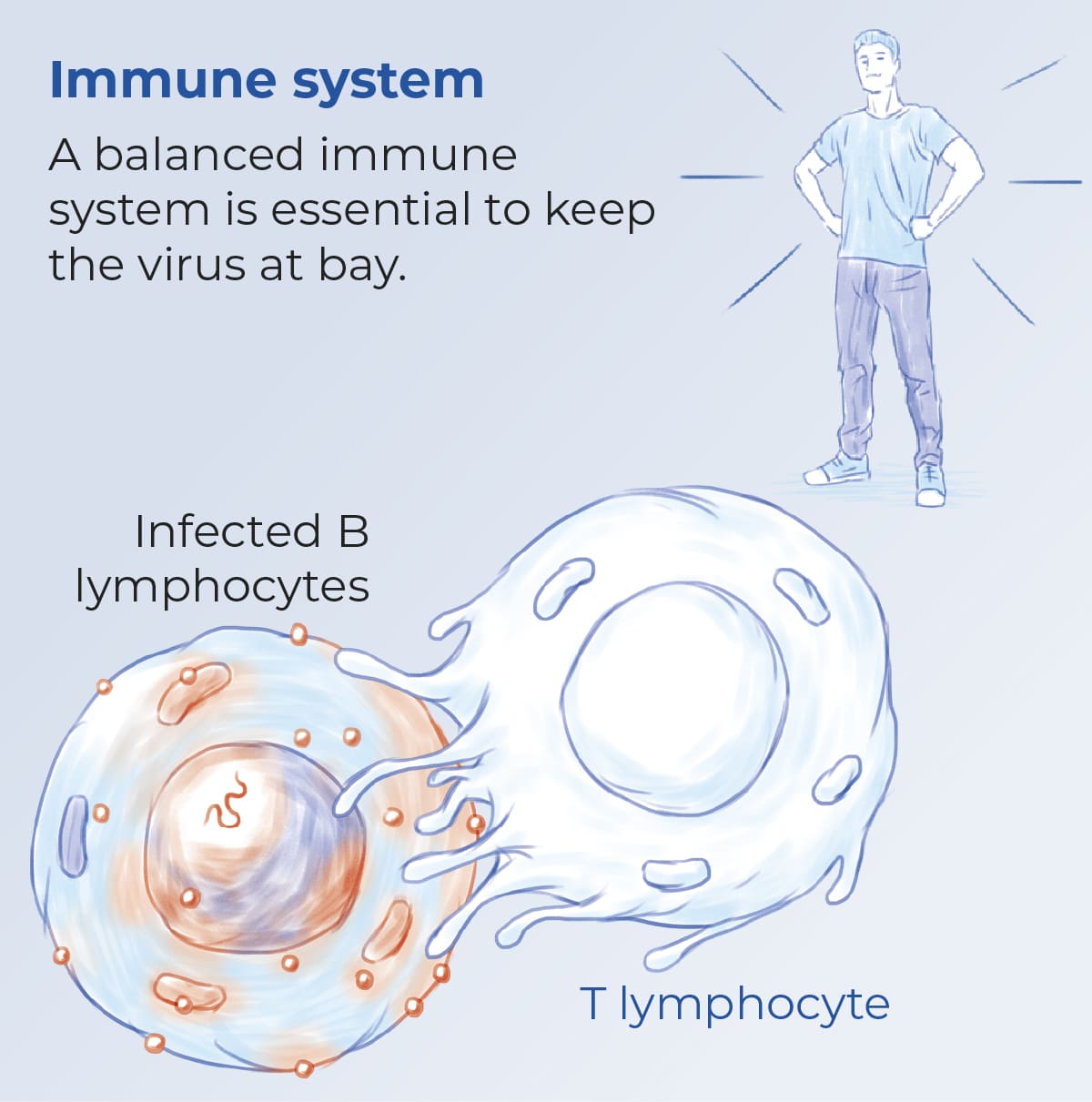The importance of screening
Monitoring EBV for predictive, preventive and treatment purposes

Once inside the body …
the virus never leaves!
How does it stay in its host, despite having one of the best immune systems in the living world?
EBV has developed the ability to avoid being detected by the host’s natural immune system. Both virus and host are involved in this strategy. EBV controls part of the immune system by producing RNA fragments that control both the expression of genes in the virus and in the host cell. This includes modifying genes related to immunity and specific cellular activities. This is similar to the virus taking control of the cell in which it is located. Some of the virus’ other proteins act as lures for the immune system, making it believe that it needs to switch to anti-inflammatory mode, which obviously supports the virus’ own escape strategy.
To remain in the human body for life, EBV sets up different “strategies”, switching between latent phases (where it seems inactive) and lytic phases (where it is active). These different strategies lead to different immune responses depending on the patient’s immune profile and background.
In some cases, the “chronic” risk of the immune response to the EBV virus may require that, from time to time, the type of ongoing strategy be identified to regulate the immune response and reduce viral replication and/or viral protein production. This is especially true during the acute or progressive stages. In a predictive and preventive approach, the purpose of such monitoring would be to prevent, delay or reduce the risk of developing EBV-related diseases.
Understanding Infection Markers to Interpret EBV Serology
The Epstein-Barr virus (EBV) follows a well-defined progression through different phases of infection. Specific markers can help determine if a person is experiencing a primary infection (first contact with the virus), a past infection (where the virus has become latent), or a reactivation of the virus.
1. Primary Infection
In this phase, we observe:
- The presence of IgM VCA antibodies, which are the first to appear (between the 4th and 6th weeks).
- Heterophile antibodies are often detected and are used in tests for mononucleosis.
- The presence of IgG EA may also indicate a primary infection. These markers decrease after a few weeks, indicating that the acute infection is subsiding.
2. Past Infection
After the acute phase, the virus becomes latent in the body. In this phase, we observe:
- IgG VCA antibodies, which generally remain present for life.
- IgG EBNA-1 usually appears after 12 weeks, indicating that the immune system has controlled the infection and that the virus is in a latent state.
3. Reactivation
The EBV virus can reactivate under certain conditions (stress, immune dysfunction, etc.). In this phase:
- We observe a renewed elevation of IgG EA, indicating viral reactivation.
- IgG VCA also remains present, but without the elevation of IgM VCA seen in primary infection.
- IgG EBNA-1 remains present, but it’s important to note that its presence alone does not necessarily indicate an active reactivation, as it typically circulates long-term after the primary infection.
Important: This information presents generalities. There are nuances and specific situations that can sometimes make interpreting these markers challenging. Therefore, it is essential to consult a healthcare professional for a detailed and tailored analysis, always based on the clinical picture.
End the diagnostic delay
The major issue with EBV is that the infection, including mononucleosis, can go completely unnoticed.
Changing EBV monitoring practices
One of our objectives with DetectEBV is to make EBV screening part of the routine practice of health care providers.


